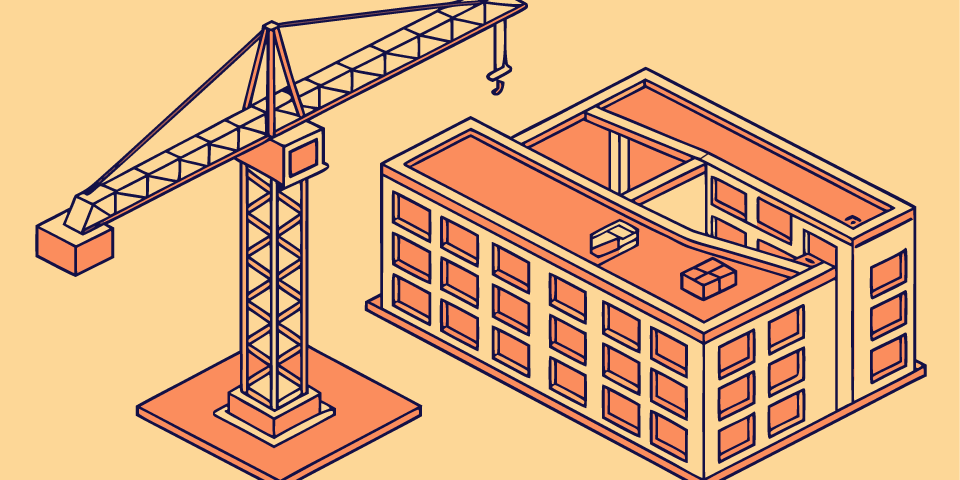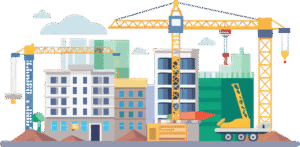It’s easy to wax poetic about land. Mark Twain famously advised, “Buy land. They’re not making it anymore”; Margaret Mitchell wrote in Gone with the Wind, “Land is the only thing that lasts”; and more pragmatically, Louis Glickman declared, “The best investment on earth is earth.” Land owners, it would seem, agree. Land is tremendously valuable, and in the last two decades, they have reaped that value. The cost of land has increased substantially in that time, with some estimates showing prices are double since 2020.
Once land prices rise, they rarely fall significantly—but this year, the rapid deceleration of construction activity has put downward pressure on land prices. In a rare occurrence, commercial real estate land brokers are beginning to report a meaningful decrease in land costs across property types. Amid tariffs and higher interest rates driving up the cost of construction, lower land prices will provide some relief to developers and could begin to make more deals pencil.
Land Prices Enter a Correction
A new report from John Burns describes land prices as “cooling fast,” and reporting from GlobeSt.com said the market had entered the early stages of “a correction.” The research shows that demand for land has fallen by two-thirds since 2022. Since a similar survey last year, demand has fallen 76%, with only 28% of land brokers reporting strong demand in their respective market. Overall, eight out of 10 brokers are saying deals are being cancelled. Land brokers told John Burns that deals that were viable just six months ago are no longer viable at today’s prices, illustrating how quickly the correction has occurred.
Slow new construction activity is the catalyst for the pricing downturn. According to the Dodge Network, nonresidential construction fell 30.1% in July. In addition, there is a growing delta between the price of completed projects and the cost of land. In residential construction, for example, new home prices fell 1% in early 2025, while the cost of a finished land site increased 6% to 4%, depending on the location. In many ways, the market price of a new construction property no longer warrants the high cost of land.
In commercial real estate, lower land prices are being reported across asset classes. Rob McRitchie, senior director at JLL Capital Markets, told GlobeSt.com that multifamily lacks positive land values, and on the retail front, Glenn Sherman, partner at Saul Ewing, told the outlet that retail developers wanted to buy land, but only for the right price.
Standoff with Land Owners
John Burns reports a pricing correction is coming, but in reality, it could take a while to arrive. The reduced demand reported by land brokers is the first step, but land owners may be hesitant to sell at lower prices, widening the bid-ask spread between buyers and sellers. Finished lots, where the land owner has invested capital to prepare the lot for groundbreaking, including securing entitlements and prepping the site, has continued to see some price growth. Demand for those sites has moderated, but brokers continue to report some price growth.
Undeveloped land, on the other hand, is seeing more significant declines. Yet, many land owners are holding onto dated pricing expectations. John Burns says the dynamic is effectively “sidelining new development.”
As developers wait for prices to come down—an inevitability according to the report—there are some effective strategies to mitigate pricing disparities in the near term. Developers are increasingly utilizing a delayed takedown acquisition structure and land banking purchases to amass enough land to build over time. Some homebuilders have transitioned to a build-to-rent strategy to change the exit equation and make land costs pencil.
Could Lower Land Prices Revive Construction?
Lower land acquisitions are a symptom of lower new construction starts. As land prices fall, more new construction deals could become financially viable. However, lower land prices would be a bright spot in an otherwise tumultuous construction environment, marked by high debt costs, tariffs, and a labor shortage that are all fundamentally increasing costs.
While land prices could help to offset some of these costs, at least in part, many outlook reports are still unfavorable. The AIA’s July 2025 Consensus Construction Forecast predicts nonresidential new construction spending will remain sluggish through 2026. More ominously, the report says there is “no turnaround in sight.”
The best opportunity to mitigate costs is by changing the equation through the adoption of automation and machine learning. These technologies drive valuable efficiencies in the development process by reducing the administrative burden, streamlining processes, and providing accurate budget and financial forecasting. Northspyre provides this suite of tools to developers, leveraging data from more than $175 billion developments. Developers can expect to see a substantial positive impact, saving up to 8% on the budget, while increasing speed to market and ensuring developers achieve their investment targets.
Lower land prices are a great start, but commercial developers need support to overcome substantial pricing challenges. Incorporating modern real estate development software like Northspyre will help developers restructure costs, understand the market, and respond better to changes. And of course, lower land costs don’t hurt, either.
Book a demo and learn more about how Northspyre’s budget and vendor management functionality ensure higher returns.



